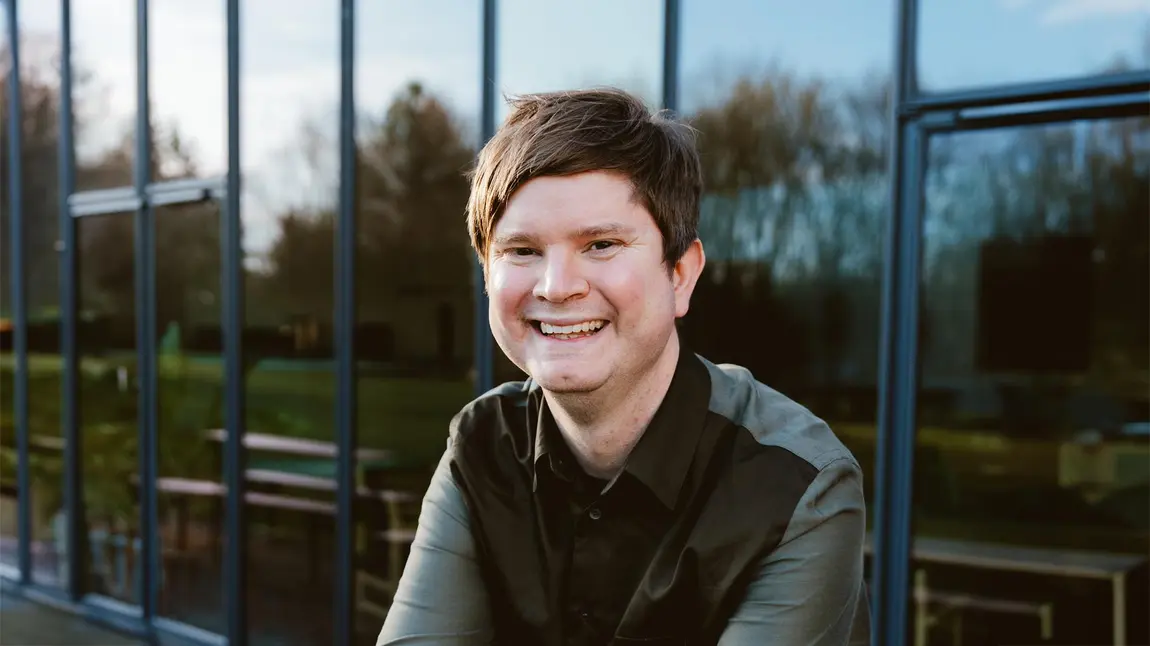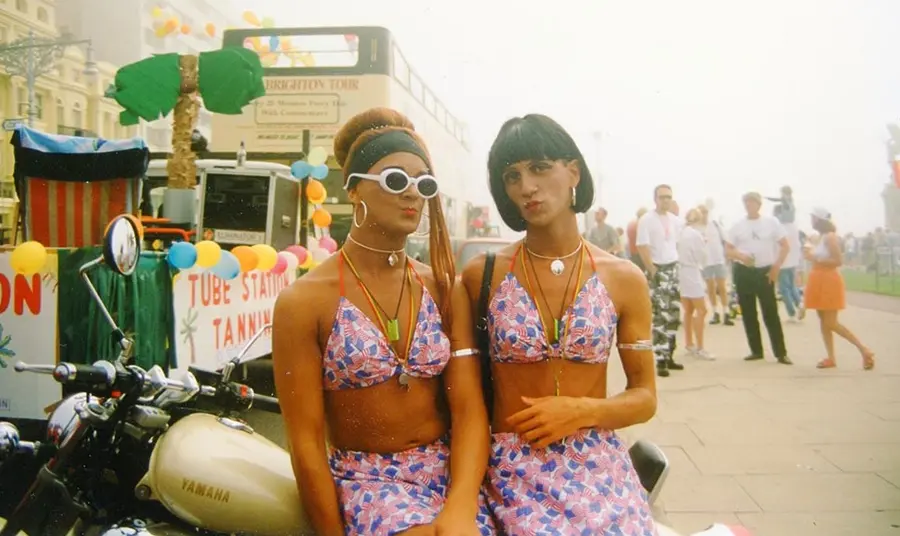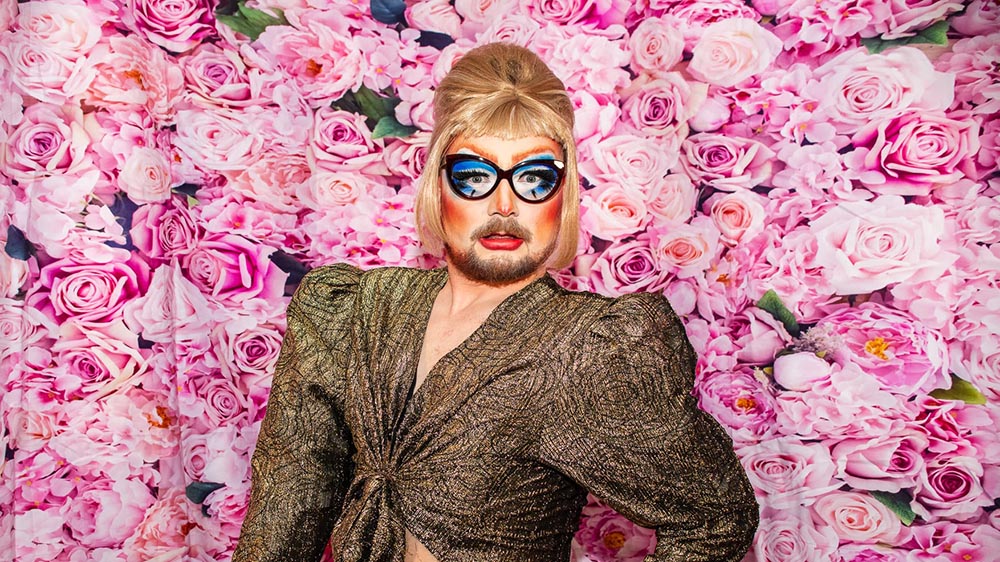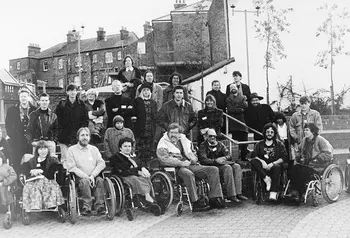Queer Heritage South: what we’ve learned about running LGBTQ+ heritage projects

In the summer of 2006 I was a pretty lost young LGBTQIA+ person studying in the US, desperate to find community and belonging. Something drew me to visit the GLBT Historical Society in San Francisco – and just a brief tour around the archive blew my mind.
Within this community’s collection there was such richness and diversity: from intensely intimate portrait photos of the early AIDS crisis to one of the original rainbow flags. It made me feel part of a historical lineage in a way I had never experienced before.
When I returned home I wanted to recapture this feeling, and gradually my awareness grew of LGBTQIA+ heritage organisations in my area and their work. Making a life in Brighton and running Marlborough Theatre, I knew that I wanted LGBTQIA+ heritage to be central to my career.
Our communities are not ‘hard to reach’, they just needed the right invitation.
David Sheppeard
Driven by social purpose: Queer Heritage South
Queer Heritage South is a heritage learning project celebrating and promoting the cultural life of the LGBTQIA+ community in Brighton & Hove and the south of England. I’m its Project Director.
In 2022, together with the Heritage Fund, we delivered mentoring sessions for small Pride and LGBTQIA+ organisations in Sussex. It’s been exciting to see new projects come to life as a result of this! Over the next four years we hope to expand our network across the south east of England to share best practice and support smaller organisations on their journey to funding and delivering their own LGBTQIA+ heritage projects.

What I’ve learned along the way
Through collaborating, asking people endless questions and from trial and error, I've learned so much. For others working in LGBTQIA+ heritage, the most valuable lessons I can pass on are:
- Respond to a need: the Queer in Brighton archive started because LGBTQIA+ stories in Brighton and Hove weren’t being collected. We knew we had to do something about this unique heritage being lost.
- Unlock the power of the community: Once word began to spread about the Queer in Brighton project, we were overwhelmed by the response and we collected over 100 oral histories. Our communities are not ‘hard to reach’, they just needed the right invitation.
- Provide a place to gather: We piloted a heritage event series, Brighton LGBTQIA+ History Club, in 2016, which is still running today. It's one of the most lively and diverse audiences in terms of age we’ve experienced. Digital has huge value, but there’s something vital about our community learning about its heritage in person.
- We’re stronger together: We’ve collaborated on exhibitions and festivals and are now embarking on a four-year programme, QHS: Live Archive, working with organisations including Brighton Museums and University of Sussex. It’s all been driven by partnerships. In the current challenging climate for LGBTQIA+ communities the importance of sharing resources and knowledge can’t be underestimated.
Spotlight on Margate Pride and sharing challenges in heritage projects
One of the organisations Queer Heritage South has worked with – as part of a bigger collaborative project gathering footage of life in Margate and Folkestone’s LGBTQIA+ communities – is Margate Pride. They are incredible and have since started their own heritage project called New Rumours, which has received a Heritage Fund grant. It's celebrating Margate's LGBTQIA+ venues of the 1980s and 90s.
Mia Pollock from Margate Pride shares my sentiment on the importance of working together. She told me: "Sharing stories, achievements and failures all chip away at the stigma that still surrounds the queer community. And we’re reaching the same audience: for a younger person to encounter a story that resonates with them can be incredibly powerful."

The nature of our heritage presents challenges which mean collaborating with communities and collecting heritage before it's too late is vital. Mia says: "One challenge is that the community’s memories about the places and times we’re investigating are sometimes unreliable. Stories connected to gay bars – often the only location where LGBTQ+ people could come together – can become blurry, so how do we document and record those stories?
"Establishing trust and consent to share the stories of a generation that’s more reluctant to be public about their LGBTQ+ identity because of the stigma they’ve experienced can be challenging. It’s all a learning curve for us, and having worked with and gained knowledge from the likes of E.J. Scott, Jane Traies and Queer Heritage South is invaluable."
Read more stories like this
Register for the Heritage Fund's email newsletter to learn about the projects we fund and get tips to improve your application.


